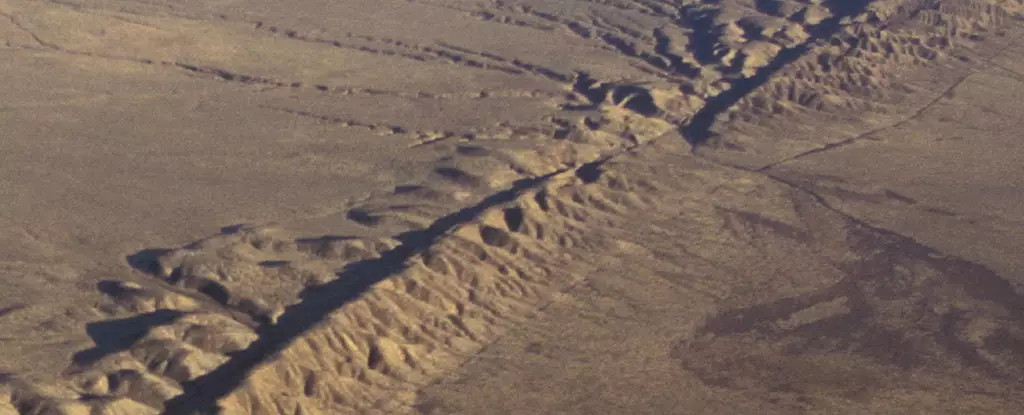In the relentless dance of Earth’s tectonic plates, the dramatic and destructive earthquakes often steal the spotlight. Yet, lurking beneath the surface are slow slip earthquakes—an elusive, often overlooked phenomenon that holds profound implications for our understanding of seismic activity. Unlike the violent shocks that rupture the ground in seconds, these slow earthquakes unfold gradually over days or weeks, quietly releasing stress along fault lines. Their subtle nature has historically kept them under the radar, dismissed as harmless ripples. However, recent scientific breakthroughs reveal that these unassuming tremors are much more than mere geological noise—they might serve as vital clues in predicting catastrophic earthquakes and tsunamis.
Technological Leap: Detecting the Quiet Pulse of Earth
Advancements in sensor technology have catapulted our ability to observe these faint seismic waves in real time. State-of-the-art borehole sensors, submerged deep underwater near the Nankai Trough off Japan, have revolutionized seismic monitoring. These devices pick up ground movements measuring mere millimeters, movements imperceptible to humans but indicative of tense stress being gradually released along fault lines. Researchers from the University of Texas Institute for Geophysics (UTIG) led pioneering efforts, capturing two separate slow slip events—one in 2015 and another in 2020—giving us an unprecedented window into Earth’s slow seismic whispers. These innovations show that with enough precision, we can begin to decode the subtle signals that precede major earthquakes.
The Significance of Slow Earthquakes in Earthquake Forecasting
What do the quiet shifts beneath the Earth’s crust tell us about the looming threat of large-scale seismic events? The answer is more promising than we may have appreciated. These slow slip earthquakes act like natural tectonic shock absorbers, redistributing and releasing accumulated stress along fault interfaces gradually rather than suddenly. This process can prevent the fault from reaching a breaking point, or conversely, if these slow motions are absent or disrupted, stress might accumulate unchecked, setting the stage for a catastrophic release. In regions like the Nankai Trough and Cascadia Fault Zone—areas historically prone to devastating earthquakes and tsunamis—monitoring these silent movements is becoming a top priority. Their presence or absence may serve as a crucial indicator, refining our models and offering hope for earlier warnings.
Challenging Assumptions: Faults, Fluids, and Tectonic Resilience
One of the most compelling insights from recent research is the link between slow earthquakes and subsurface fluid pressures. High fluid pressures within fault zones appear to facilitate these gradual slips, allowing the crust to relieve stress incrementally rather than building toward explosive failure. This fluid-driven mechanism offers a double-edged sword; while it can moderate stress build-up, it also indicates that some faults might be more prone to long-term, unnoticed strain accumulation. Moreover, fault zones capable of releasing pressure independently—particularly at the upper levels—highlight a complex and dynamic system of internal checks and balances. Recognizing these mechanisms underscores the importance of ongoing, high-resolution monitoring. It challenges previously held notions of ‘silent’ faults being truly inactive, revealing instead a tectonic ecosystem alive with subtle, yet significant, movements.
Implications and the Path Forward
The potential of slow earthquakes to serve as early warning signals transforms how we approach seismic safety. Instead of reacting solely to destructive quakes after they occur, scientists now envision a future where continuous, detailed surveillance can anticipate major events with greater confidence. For policymakers and communities at risk, this signifies a paradigm shift—from helpless preparedness to proactive resilience. Yet, this vision demands substantial investment in technology and international cooperation. The advancements achieved near Japan’s Nankai Trough exemplify how precision monitoring can illuminate the Earth’s hidden seismic language. As our understanding deepens, we must confront the sobering reality that many fault zones, like Cascadia, harbor the capacity for megaquakes—sometimes dormant for centuries, yet all too capable of unleashing havoc. Recognizing the subtle signals of slow slip earthquakes might be the key to unlocking a safer, more prepared future.

Leave a Reply